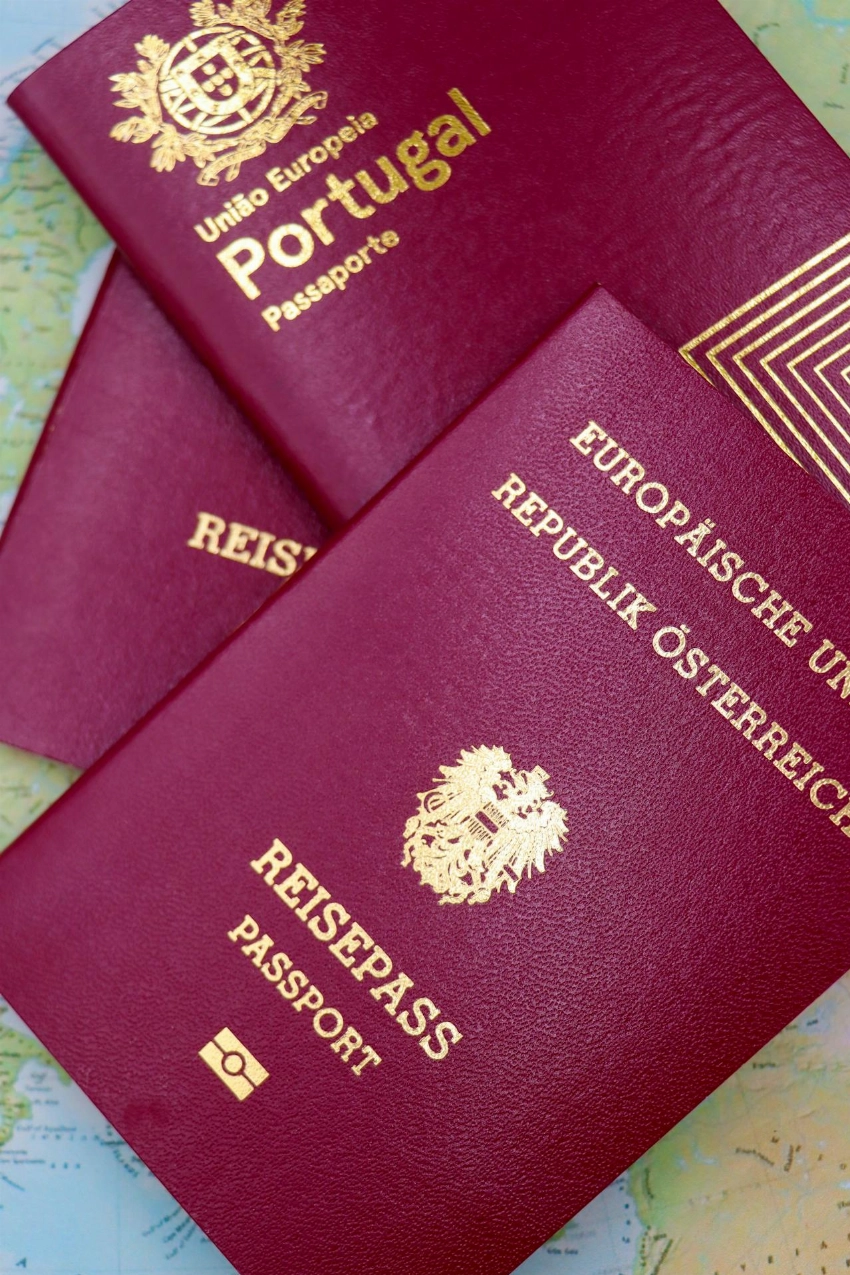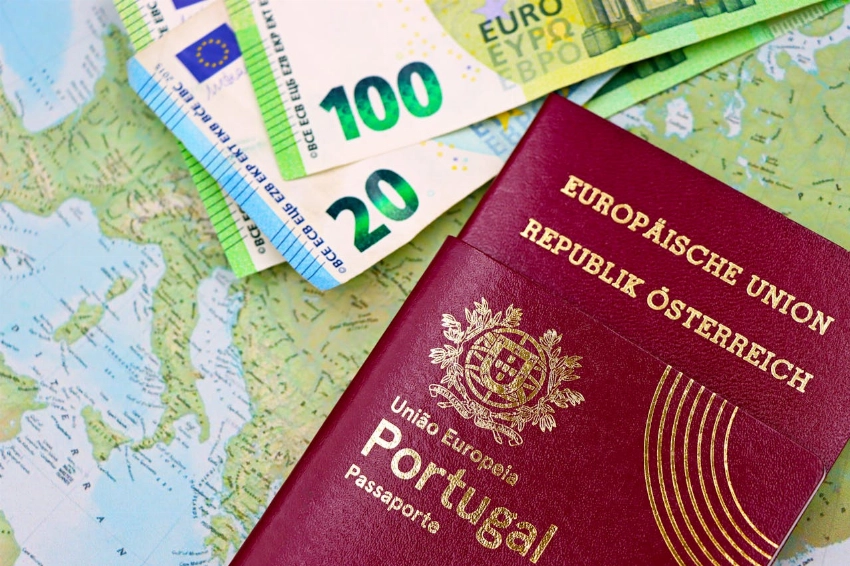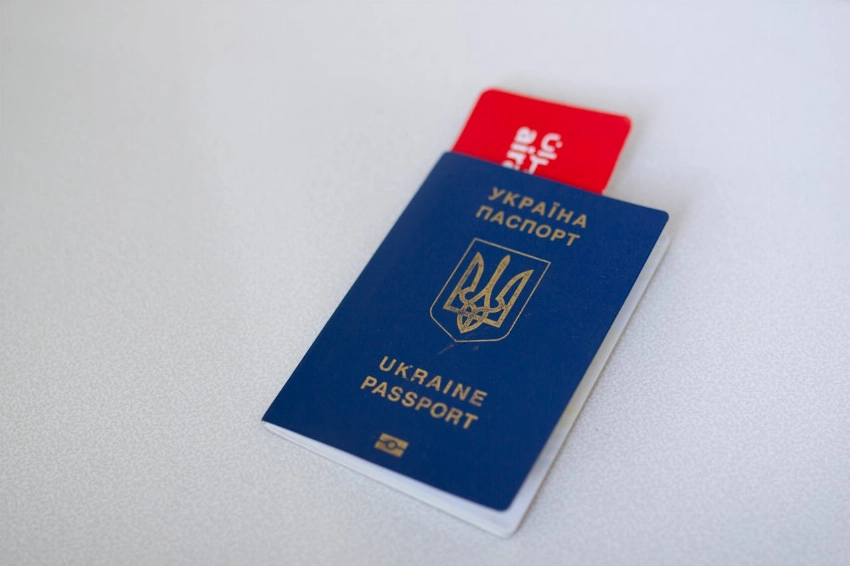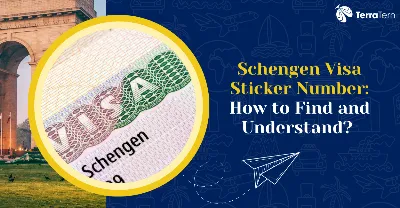Key Highlights
- What is a Schengen Visa Sticker Number?
- How to Find Schengen Visa Sticker Number on Your Visa in 2025?
- Understanding the Format and Structure of Visa Sticker Number Schengen Visa in 2025
- How to Read and Understand Your Complete Schengen Visa Sticker in 2025?
- Why Your Schengen Visa Sticker Number Matters for Travel?
- Common Issues and Solutions with Schengen Visa Sticker Numbers: Experts' Tips and Updates 2025
- Digital Future: Changes Coming to Schengen Visa Stickers in 2025
- Latest Facts and News
- Conclusion
In case your travel plan consists of nations that are members of the Schengen visa sticker number, then you have to refer to your visa papers as they are essential. The Schengen visa sticker number is one such important part of that documentation, as it is a code that is also more important than most travellers appreciate. This number is in the European visa system, and as a result, which is obvious in some cases, security at the borders, travel insurance and even air tickets are issued using this number.
In this guide, you will find a complete guide on how to find the Schengen visa sticker number, the reason why it is important, where to find it and how it is used now, and in the foreseeable future. Considering that the EU is slowly moving into the world of total digitalisation by the year 2028, it is increasingly necessary that travellers be knowledgeable about how to find the Schengen visa sticker number. This comprehensive guide will teach to read and check your Schengen visa sticker number without any doubts.
What is a Schengen Visa Sticker Number?

Schengen visa sticker number is an alphanumeric code that is the main identifier of your visa. In order to verify border control purposes, travel insurance applications, and administrative procedures during your stay at the Schengen Area, it is necessary to ensure this unique identification number.
It is also at the core of the immigration system in that it identifies your personal information, travel authorisation, and biometric data with one unique reference code that can be confirmed to be valid in many countries in the Schengen Zone.
Key Characteristics of the Visa Sticker Number
The Schengen visa sticker number on the visa has standardised features that enable the authorities to easily locate and authenticate it:
1. Format:
The number printed on the sticker is generally 9 to 11 characters in a combination of capital letters (normally country code prefixes) and numbers. As an example, the FR123456789 would represent a French-registered visa.
2. Location:
The number can always be found at the top right corner of the visa sticker and therefore finding it during checks at airports or borders is easy and can always be found. It is not marked clearly, which is why people travelling do not pay much attention to it.
3. Colour:
The number of the sticker of the Schengen visa is printed in red ink, unlike the rest of the black text that appears on the other visa. This gives it a clear distinguishing feature, which is a distinction when looked at.
4. Purpose:
This number will have a variety of functions
-
It is seen as a surveillance tool by the immigration authorities in Schengen countries.
-
It is applied as a verification tool during entry, exit and renewals of visas.
-
It is normally needed during the administration procedures, like getting an extension, travel insurance, or accessing the visa records in case you lose or misplace your passport.
Also Read: The Most Common Schengen Visa Rejection Reasons
How to Find Schengen Visa Sticker Number on Your Visa in 2025?
There are advantages to knowing how to find the Schengen visa sticker number on your visa that can help you save time and eliminate confusion when checking in at immigration, when you need to apply for insurance, or fill in official travel documents. The Schengen visa sticker number is well-positioned so that it becomes recognised easily after becoming familiar with its arrangement.
This numerical code will always appear in the upper right corner of your page that has the visa sticker in it. It normally consists of 9-11 characters, which are a mixture of letters (used to indicate the issuing country) and numbers (used in tracking and in administration). Its distinct size and red ink help it to be noticeable when compared to the rest of the other visa details.
New Step-by-Step Location Guide
These are the right steps to locate and identify your Schengen visa sticker number:
-
Turn to the page in your passport where the Schengen visa has been attached.
-
Look at the upper right corner of the sticker of the requisite visa- the number will always be printed over there.
-
It consists of an alphanumeric code that typically begins with two to three characters (ex., DE Germany, FR France) and then is followed by a pattern of numbers.
-
Observe the red ink printing of this number, in contrast with the black print of most of the others on the sticker.
-
Write this number somewhere safe, not in your passport, as an insurance measure in case of loss or destruction.
What Makes the Sticker Number Different?
The Schengen visa sticker number has in the past been confused with other visa information, like the visa number or document control number. Nevertheless, there are a number of features that make it unique and distinguishable:
1. There is no Special Labelling
In contrast to Visa No. Or Valid From, the number on the sticker is not labelled, and this can be confusing to travellers. It merely presents itself as an alphanumeric code without any signpost.
2. The Serial and Country Code Format
The first part of the sticker number usually contains the country code (e.g. FR, DE, IT) and is followed by the serial number. This makes it unique among other numbers, such as dates of validity or types of visas.
3. The Greater the Font Size, the Better
It is usually in a slightly bigger and bolder type, which makes it easier to be identified and confirmed when verifying by the border officers who are not eager to spend much time in the process. This font style is one of its embedded visual recognition and security elements.
Understanding the Format and Structure of Visa Sticker Number Schengen Visa in 2025

Schengen visa is a quite complicated set of characters that seems to be nothing but a random code; in reality, though, it is a highly programmatic sequence of alphanumeric characters that carries the necessary information on administration. This is a particular code that allows Schengen authorities, the embassies, consulates, and border officials to track, prove and verify your visa in a standard and safe method in each of the 27 countries of the Schengen area.
Knowing about the format of this visa sticker number gives you better control over your immigration documentation, minimises form-filling mistakes, and you will usually be asked to provide the details of this sticker when providing any supporting justification as to why you need your visa extended, claim insurance, or even reapply, in many cases.
Use of the Format
This format helps guarantee consistency among the various countries and gives an easy mechanism whereby an official and a traveller can identify some important details that were encoded within the visa sticker. Being aware of what constitutes this number gives you a better idea of:
-
What is the visa-issuing country?
-
The internal tracking of your visa. How can your visa be tracked?
-
How can the entry of your visa be tracked
-
What are the numbers relevant to the digital or physical verification
-
It is particularly handy for those who may be travelling with multi-national routes or even have to make visa applications at representative embassies (i.e. the German visa is applied in the French consulate).
Core Structural Elements
The Schengen visa sticker consists of the following:
1. Alphabetic Country Code (Alphabetic):
The initial 2-3 capitals represent the country of the issuing state. Different countries that belong to the Schengen area have different identifications (use of different letters like FR in France, IT in Italy, etc). This section will give you an instant clue about the country that endorsed your visa, even when you may have applied to another country because of consular agreements.
2. Serial Number (Numerique):
A series of typically 6 to 9 figures that follow the name of the country. This is the tracking and digital registration unique identifier. It tends to be machine-readable.
3. Length & Format:
The total of them generally amounts to 9-11 characters. It normally carries itself in red ink, and so stands out to differ from passport numbers and other visa particulars.
Number Structure Components
In order to come to grips with the definition of the Schengen visa sticker number Schengen visa, the following structure is vital in dividing and subdividing it into three. This alphanumeric code is not random; it has a standardised format which is used in all the Schengen member nations. The individual components all have different uses when it comes to visa processing, immigration policy, and electronic monitoring.
These are the main elements of it:
|
Component |
Description |
Example |
|
Country Code |
The first 2 to 3 letters are the country code |
France (FR, DE = Germany |
|
Serial Number |
The second part of the code is a series of consecutive numbers after the country code that helps to single out your visa |
123456789 |
|
Total Length |
The total and write sticker length is normally between 9 and 11 characters |
FR123456789 |
Schengen Visa Country Code Reference Guide
The first and most recognisable part of your visa sticker number is the country code. These two or three capital letters pinpoint the country that issued the visa, even though the embassy might be in a different country and any country that you will visit.
It is a very critical code in formal procedures like:
-
Immigration checks
-
Extensions or renewals of a visa
-
Insurance claims verification
-
Consular communication
A detailed table of commonly used country codes in the Schengen visa sticker number format is as follows:
|
Country Code |
Country Name |
Function |
|
AT |
Austria |
Marks given out by Austrian embassies/consulates |
|
BE |
Belgium |
Applied in Belgium for visa issuance throughout the world |
|
DE |
Germany |
It is one of the most common issuers of Schengen visas |
|
ES |
Spain |
Refers principally to visas handled by Spanish consulates |
|
FR |
France |
It is written on Schengen visas issued by French authorities |
|
IT |
Italy |
Italian migration Signals approved in 39 per cent by the Italian immigration. |
|
NL |
Netherlands |
Dutch Schengen visa stickers |
|
CH |
Switzerland |
Although not an EU member state, Switzerland is in Schengen and has this code on its visas. |
Also Read: Multiple Entry Schengen Visa Available For Indians
How to Read and Understand Your Complete Schengen Visa Sticker in 2025?
Okay, so your Schengen visa sticker? It's not just a pass to travel. It’s a small document with all the important stuff about your trip. Each part of the sticker has a meaning, so travellers and border officials can see if you're following the rules. If you know what the info means, you won't accidentally stay too long or mess up your entry. The info is in English, French, and German – those are the main languages used in all Schengen countries.
Essential Visa Sticker Elements
Your Schengen visa sticker has some key things on it. Here's what they're about:
1. Visa Types
This tells you what kind of visa you have:
-
Type C – Short trips (usually up to 90 days in any 180 days)
-
Type D – Long-stay (for things like school or work, and good only in the country that gave it to you)
-
Type A – Airport travel (lets you go through international areas of Schengen airports without really entering the Schengen area)
2. How Many Times Can You Enter?
This shows how many times you're allowed into the Schengen area:
-
“MULT” – You can enter as many times as you want while the visa is good
-
“1” – Only one entry
-
“2” – Two entries allowed
This is super important if you have open travel plans or need to go back and forth across Schengen borders.
3. How Long is the Visa Good for?
These dates show when you can travel:
-
FROM / DU / VOM – The day your visa starts being good (the earliest you can enter)
-
UNTIL / AU / BIS – The last day your visa is good (the latest you can enter)
-
This isn’t how many days you can actually stay. That's listed separately.
4. How Long Can You Stay?
-
It looks like this: “DURATION OF STAY/DURÉE DE SÉJOUR/AUFENTHALTSDAUER: XX”
-
This tells you the number of days you're allowed to be in the Schengen area while your visa is valid.
Territory Coverage
Territory Coverage Trading in Croatia is mostly limited to the capital city, with only a few pieces being marketed to other persons located in Croatia.
In this section, you can see where you can use your visa
-
ETATS SCHENGEN”- You would have had the possibility to use your visa in all 27 Schengen countries.
-
Limited Territorial Validity LTV: It is the most regular and airbendonic type of visa designation.
This is characteristically pointed out by:
-
Your visa may be valid in only certain countries; in other cases, it may not be. Country code list (i.e. FR, DE, BE) instead of ETATS SCHENGEN
-
A list of country codes (i.e., “FR, DE, BE”) rather than “ETATS SCHENGEN”
-
It can be applied exceptionally, like on the humanitarian visa or in cases where travelling is prohibited because of the legal aspect of it.
Why Your Schengen Visa Sticker Number Matters for Travel?

The Schengen visa sticker number identification number means much more than a code, and they are very useful in legal and administrative procedures that are smooth during your stay in the Schengen Area. It is always good to have this number, whether travelling into a country, extending your visa, or facing some type of unforeseen travel problem, this number can give you an official identity as a visa holder.
Understanding the need for this figure and at crucial times can also help you out:
-
Attributing it to bottlenecks at immigration, cite immigration
-
The paperwork should be filled in as well, St cache 42
-
Get emergency help in a brief time
So, how is this number put into practice in travel situations?
Critical Uses Of Your Visa Sticker Number
The number on the sticker of your visa is essential in three aspects: during border control, administration, and emergency assistance. Here’s how:
-
The Border Police
The visa sticker number is used as a key in accessing your documents by the border authorities when you are entering or exiting the Schengen territory.
-
Gift Check: A border control officer checks the numbers written on your passport and compares them to the name on the visa that was issued to you.
-
Authenticity of Visa Confirmation: Authenticity of Visa counters at the border use the number to ascertain the authenticity of your Visa, to ensure that it is not a forged/altered one.
-
Tracking of Travel History: The visa number is used by authorities to track entry and exit points of different tourists who may make several trips on the same visa.
It is advisable to note down clearly or make a photocopy of your visa sticker number in case you lose your passport.
-
Administrative Processes
This figure may be asked very repeatedly on all sorts of official documents throughout, and also in the wake of journeys:
-
Travel Insurance: A large number of insurance providers require your visa number when they process insurance policies that cover the Schengen area.
-
Visa Extension or Renewal: When it comes to the extension of your visa or an application for a new one, the number on the visa sticker will be used to continue the process of reference and when checking eligibility.
-
Contacting Consulates or Embassies: When people are talking to consulates or embassies in case of questions regarding their visa, the sticker number gives the consulate staff easy access to the case file of the person.
-
Emergency Situations
In case you lose your passport or it gets stolen, a replacement cannot be received unless your embassy can facilitate your legal status in the Schengen region using the number generated on your visa. When you find yourself in unforeseen circumstances in a foreign country, your visa label number assumes an important role in the process of locating and offering support to you.
-
Delayed Flight: during the time of the postponed flight or when you are arrested or other kinds of twists suddenly alter your travelling ideas, the authorities at the immigration or at the airport may use your visa number to verify your arrival or assist in rescheduling your ticket and getting permits.
-
Consular Protection: In case of legal or medical emergencies, consulates often look at the number of the visa sticker on the passport to get access to your file and your rights on a visa perspective.
-
Travel Delays: During the time of cancellations of flights, or in case of detention or other emergencies, which alter your travelling plans suddenly, the authorities at the immigration or the airport itself can use your visa number to verify your entrance or even assist you in re-booking your tickets and procuring permits.
Also Read: Cover letter for Schengen visa: Master Guide
Common Issues and Solutions with Schengen Visa Sticker Numbers: Experts' Tips and Updates 2025
The multiple problems and solutions of Schengen Visa Sticker Numbers loss of days, called the loss of Multi Problems and solutions of Schengen Visa Sticker Numbers loss of days, happened on the day wished days stopped, the day when wished day never, the day when the day called multi wished day stopped. Although the Schengen visa sticker number is supposed to resemble a standard and easily understandable format, there are ways through which the traveller may encounter one or more issues based on readability, identification, or documentation. These questions can make the process of crossing borders complicated or problematic during a journey when claiming insurance or obtaining embassy assistance.
In this part, you will learn the most typical issues that people face and get the solution and prevention advice that you can take related to these problems, so that you never face them as a surprise.
Frequent Visa Sticker Number Problems
Knowing what the trouble may be helps you respond promptly so that you do not get stuck in a situation of uncertainty while travelling. The most mentioned problems and solutions are the following:
1. Illegible or Damaged Numbers:
Issues: impossibility to read the numbers of the sticker due to indistinctness, invalidity, scratches, or partial tears affecting the visibility of the numbers in the visa.
Solutions:
-
Report to the one who issued your visa or consulate, to have the damage reissued, or have a copy of the data about your visa in written form.
-
When the visa is spoiled, take a photograph of the part of the passport where the visa is placed. This may be utilised to maintain the records of identity temporarily.
-
Anticipate processing delays if the visa was misprinted and correction is ordered, one should anticipate some delay to rectify these damaged visas, especially during the busy travel periods. The process ought to begin well in advance of the travel date.
2. Verification Difficulties:
Issue: The number on the sticker of the visa is not accepted, or the number is not under the records during some of the checks (such as border crossings or insurance applications).
Solutions:
-
At the borders: You need to have a copy of your visa application approval email or letter with you at all times. About insurance: Because your travel insurance company will not be able to verify your visa, you should include a clear image of the visa sticker that bears your details as well.
-
The contact details of the embassy/consulate that issued the visa: It is also good to have the contact details of the embassy/consulate that issued the visa.
-
They will be in a position to verify the authenticity of the visa, and they will help in settling the disputes. They will also be in a better position to clarify whether the visa is authentic or not, as well as to solve cases of disputes. Timeline: Allow extra processing time for replacements
Latest Prevention and Preparation Tips for Schengen Visa Sticker Number
To avoid the most frequent problems with your visa sticker number, it is suggested to take several precautions that are rather simple and still effective:
1. Record your Number Separately from your Passport
The sticker of the Schengen visa is to be placed in the slip:
-
An encrypted (encrypted) electronic document of a high level (such as cloud and password manager)
-
A photocopied card on pre-travel, on-travel, and post-travel, or a communication in an emergency sheet
2. Photograph the Sticker for Backup Documentation
A clear, bright photograph of the whole page of the visa with the focus on the number of the sticker at the top right-hand corner of the page.
-
Send the picture off to your email or upload it to a secure cloud storage so you can utilise it in case you lose your passport or it is stolen.
-
It has a lot of racing trivia
3. Verify Accuracy Immediately upon Visa Receipt
-
When you receive your visa, the first thing you should make sure of is that the number of stickers is visible and printed.
-
Check that it matches any reference numbers in your visa approval paperwork, and you must have consistency.
4. Check visibility in different lighting conditions
-
Many of the stickers printed with visa numbers are printed in red colour, which may not be easy to read in dark spots.
-
This needs to be visible both at night and during the day. This aids in avoiding verification complications at gloomy hours, like travelling at night or checking at the border stations.
Digital Future: Changes Coming to Schengen Visa Stickers in 2025

It is a Schengen visa sticker that is undergoing a revolution in technology. Part of the European Union's digital vision, physical paper-based visa stickers will give way to a fully electronic routine of visas. The changes are aimed at enhancing the efficiency, security, and user-friendliness of the travellers and border authorities involved. It is likely that the physical number of the Schengen visa sticker number schengen visa will be phased out with the introduction of digital identifiers that reside in the security of a platform by 2028.
Upcoming Digital Transformation
The digitalisation of the visa sticker number Schengen visa will unveil a number of high-tech solutions that will have a substantial change on the way visa information, including sticker numbers, will be processed, verified, and recorded.
1. Encrypted Barcodes Replacing Traditional Stickers
-
The application of Physical Stickers is displaced by Sam Lost's nothing downcast sixpenny barcodes.
-
The physical visa stickers that have visible numbers on them will be replaced by 2D barcodes, which contain the entire information related to the visa.
-
These barcodes will be electronically signed and tamper-proof and therefore secured and authentic.
2. Mobile App Verification for Instant Authenticity Checks
-
With the visas in their digital format, the visa holders will access them through the official EU mobile application.
-
Border officials are able to receive a verification of your visa instantly after scanning a QR code; they no longer have to perform physical checks of documents.
3. Blockchain Integration for Enhanced Security
-
There are talks about storing sole visa records via blockchain technology.
-
Such a decentralised approach had the chance of eliminating forgery and making Schengen countries more interoperable.
4. Real-time Tracking Capabilities for Immigration Authorities
-
Digital visas will enable the government to monitor the entry, exit, and overstays in real-time, hence curbing visa misuse and the period of illegal stay.
-
This also boosts agency-to-agency coordination in the control of border agencies.
Transition Timeline
-
Enhanced biometrics and security (enhancement of the current stickers provided on the visa, e.g., holograms, hidden barcodes, encryption)
-
Awareness of when the scenario in the digital shift is going to change assists travellers and immigration experts in preparing in time:
Year Milestone
-
Pilot electronic testing of full digital visas by a small number of countries in the European Union: 2026, 2027
-
Ramp up completely computerised visas in the selection of the EU countries: 2026
Also Read: Travel Insurance for Schengen Visa: Latest Complete Guide
Latest Facts and News
-
Digital Transformation 2025: The EU is transitioning to fully digital Schengen visas by 2028, replacing traditional stickers with encrypted barcodes
-
Enhanced Security Features: New 2025 Schengen visa stickers include advanced security features to reduce fraud and forgery
-
Processing Updates: Current visa processing times have been extended to a maximum of 45 days due to increased biometric requirements
-
Biometric Data Collection: Fingerprints are now collected every 59 months for travellers aged 12 and above
-
Mobile Verification: Border authorities now use mobile scanning technology to verify visa sticker authenticity instantly
-
Country Code Updates: Some Schengen countries have updated their visa sticker number formats for better tracking
-
Travel Insurance Integration: Visa sticker numbers are now directly linked with mandatory travel insurance policies for verification.
Conclusion
Well, the greatest place to start is by knowing the details of how to find Schengen visa sticker number. The visa sticker number Schengen has is not merely a code but serves as a key between your Schengen visa, your travel papers, and the online verification systems. The first step in learning how to handle your documents comfortably and cross the checkpoints without any complications is learning how to find your Schengen visa sticker number. Schengen visa sticker number is crucial to tracking, authenticity, and security. You have to make sure that you always re-check the sticker number of your visa, make a separate recording of this number, and check that your Schengen visa information is legible and correct.
To learn more about the Schengen visa sticker number and to find assistance for various visas, contact TerraTern right away!






